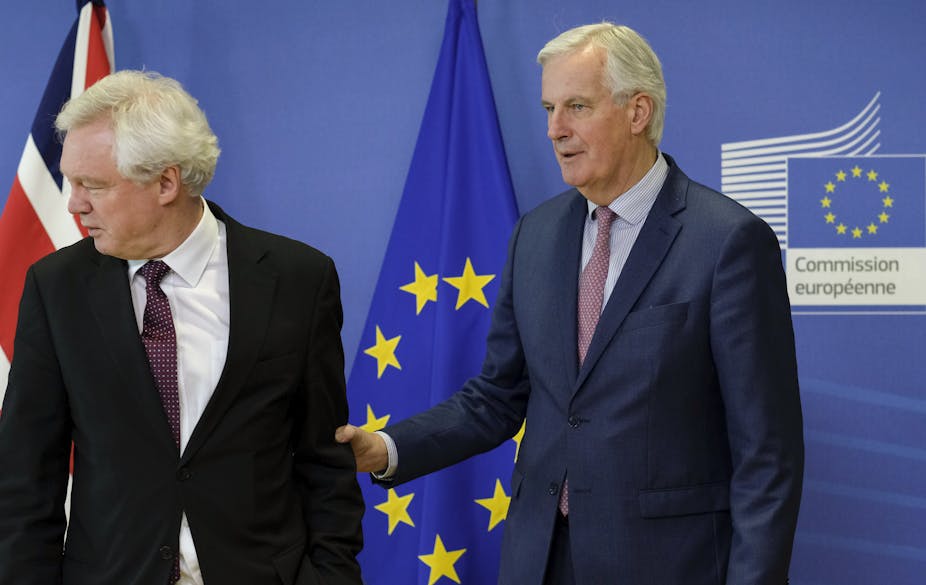The long process of the UK withdrawing from the EU has been marked by a number of key moments. One of those, halfway through the two-year period of the Article 50 process, is a draft Withdrawal Agreement for Brexit, including jointly-agreed language on transition.
Transition is important, but poorly-understood: if you’d like a Lego-based explanation, then try [this]:
The essence of it is simply that there will be a period between withdrawal from the EU in March 2019 and the start of a new relationship between the UK and EU, pencilled in to begin in January 2021.
But a number of misunderstandings have arisen, and it’s important not to let these slip. Partly that’s because they obscure what is actually happening, but mainly it’s because transition isn’t as trouble-free as one might imagine from the lack of fuss from the negotiations.
Transition isn’t membership
One of the few things that has not been in doubt in the Article 50 negotiations is that the UK is leaving the EU: British government policy has not wavered from that at all, and the EU has studiously respected the UK’s decision. Once the formal notification of withdrawal was made on March 29, 2017, it has been clear to all parties in the process that the UK will cease to be a member state on March 29, 2019.
However, because the plan for transition is that during the period the UK will continue to follow all EU rules, pay into the budget and abide by rulings of the EU’s Court of Justice, some have seen fit to describe this as membership in all but name.
This is incorrect in one major way: the UK will not have voting or representation rights during transition, barring some very limited areas where it necessarily must have an input, as in the case of fishing quotas. The EU has always closely guarded membership as something that comes with privileges and so it is here: during transition, the UK will not be like a member on this most basic test.
Clearly, this is highly problematic as a democratic proposition. The UK will have all of the obligations and none of the voting rights. Even the creation of a joint committee to “seek appropriate ways and methods of preventing problems that might arise” will not really resolve this problem, especially if those problems turn out to be ones of high politics.
Transition doesn’t solve problems of a cliff edge
A key part of the logic for going for this “stand-still” transition was to reduce the number of changes in the situation on the ground come the point of withdrawal. And this text largely does that: for citizens and businesses, there is much more clarity about continuity of legal frameworks, assuming this deal is approved.
But several problems remain. An immediate area of concern deals with third-country deals. The UK, as part of the EU, has signed several hundreds of these over its period of membership and their legal status is – at best – unclear. In particular, when agreements have been signed between the EU and the third country, the UK’s withdrawal would seem to imply that it is no longer part of that agreement.
Despite the EU’s commitment to coordinate requests to third countries to roll-over deals to cover the transition period, there is no certainty that this will be forthcoming.
Even more significantly, the current draft text lacks any mechanism for extending the transition period. That might be necessary to allow some more time to complete the negotiations on the new relationship, or to handle problems with ratification, as was the case with the EU-Canada deal.
As things stand, the March 2019 cliff edge that has so preoccupied negotiators to date has simply become a December 2020 cliff edge, but without the scope to avoid it, because of its basis in Article 50.
Transition not a model for stable future relations
This links into the final misunderstanding. Some pro-EU supporters see transition not so much as a stepping stone but as a final destination: both sides could just agree to extend it out and, before you know it, it’s a semi-permanent thing, which no-one can bring themselves to tackle or change.
Quite aside from the lack of extension mechanism at present, there are a number of problems with this view. Most seriously, it would be liable to testing by legal challenge to the EU’s own Court of Justice.
Relations with third countries are concluded under specific provisions in the EU’s treaties, so if it looked like there was an attempt to circumvent this by simply extending a deal made under Article 50, then the risk of annulment would be substantial.
Moreover, even if the EU was help to proceed on that basis, the WTO might disagree, since temporary arrangements (of which this would clearly be a case) are only allowed in anticipation of the firm approval of a trading deal: no deal, no transition.
But the biggest problem with this view is that transition remains deeply problematic in democratic terms. To have a standing situation where the UK lacks representation in an organisation that shapes its society and economy in myriad ways is not a recipe for stability, let alone accountability and legitimacy.
This article has also been published by The UK in a Changing Europe

